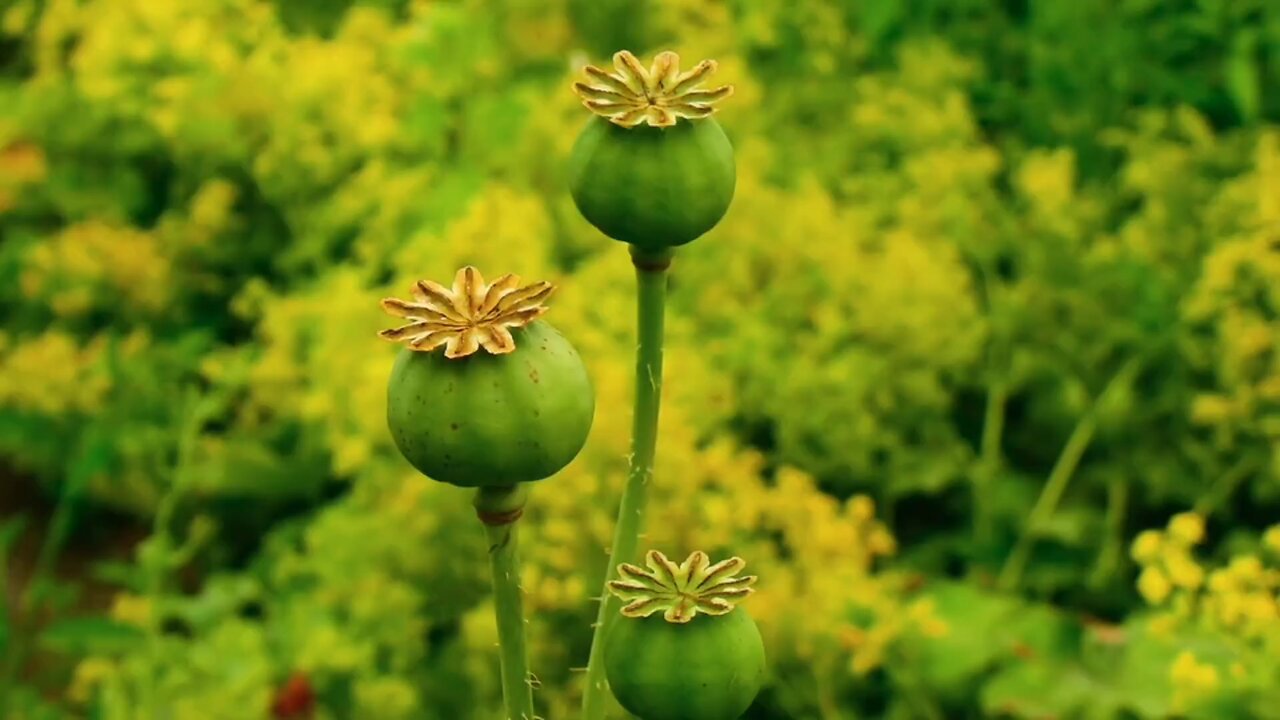Premium Only Content

"The Opium Poppy Capsule: A Botanical Powerhouse"
The opium poppy capsule is a fascinating part of the *Papaver somniferum* plant, both for its botanical significance and its historical and medicinal uses. Here’s a detailed overview:
### **1. Structure and Development**
- **Shape and Size:** The opium poppy capsule is a spherical to ovoid structure that develops after the flower petals fall off. It typically ranges from 2 to 6 cm in diameter.
- **Exterior:** The surface of the capsule is smooth, and it’s often green when immature, transitioning to a brownish or grayish color as it ripens.
- **Interior:** Inside the capsule, there are several compartments or chambers, each filled with tiny seeds. These seeds can range in color from white to blue-black, depending on the variety of the poppy.
### **2. Latex Production**
- **Latex:** The capsule produces a milky fluid called latex, which is rich in alkaloids. When the capsule is scored or incised, this latex oozes out and gradually dries into a sticky, brownish substance known as raw opium.
- **Alkaloids:** The latex contains several alkaloids, the most notable of which are morphine, codeine, and thebaine. These compounds are the active ingredients used in the production of various narcotic drugs.
### **3. Harvesting Process**
- **Incision:** Traditional opium harvesting involves making shallow cuts around the unripe capsule, typically in the evening. The latex seeps out overnight and is collected the next morning.
- **Collection:** The dried latex is carefully scraped off the capsule and collected for further processing. This raw opium can then be refined into different drugs.
### **4. Uses**
- **Medicinal:** Historically, the opium extracted from these capsules has been used for its analgesic (pain-relieving) properties. It has been a key ingredient in medicines like morphine and codeine.
- **Culinary:** The seeds contained within the capsule are not narcotic and are widely used in cooking, especially in baking, for their nutty flavor.
- **Ornamental:** Dried opium poppy capsules are often used in floral arrangements and crafts for their unique and aesthetically pleasing appearance.
### **5. Cultural and Historical Significance**
- **Historical Use:** The opium poppy has been cultivated for thousands of years, with evidence of its use dating back to ancient civilizations in Mesopotamia, Egypt, and Greece.
- **Cultural Impact:** Opium derived from poppy capsules has played a significant role in global trade, medicine, and even conflicts, such as the Opium Wars between Britain and China in the 19th century.
### **6. Legal and Ethical Considerations**
- **Regulation:** Due to its potential for abuse, the cultivation of *Papaver somniferum* and the production of opium are heavily regulated in most countries. It’s illegal to grow opium poppies for the purpose of producing narcotics in many regions.
- **Ethics:** The use of opium and its derivatives raises significant ethical concerns, particularly regarding addiction and the global opioid crisis.
The opium poppy capsule is a remarkable botanical structure with a complex history and significant impact on medicine, culture, and society. If you need more detailed information on any specific aspect of the capsule, feel free to ask!
-
 23:55
23:55
CartierFamily
2 days agoElon & Vivek TRIGGER Congress as DOGE SHUTS DOWN Government
26K30 -
 5:43:44
5:43:44
Scammer Payback
2 days agoCalling Scammers Live
117K17 -
 18:38
18:38
VSiNLive
1 day agoProfessional Gambler Steve Fezzik LOVES this UNDERVALUED Point Spread!
90K14 -
 LIVE
LIVE
Right Side Broadcasting Network
10 days agoLIVE REPLAY: President Donald J. Trump Keynotes TPUSA’s AmFest 2024 Conference - 12/22/24
5,894 watching -
 4:31
4:31
CoachTY
20 hours ago $19.28 earnedCOINBASE AND DESCI !!!!
97.8K9 -
 10:02
10:02
MichaelBisping
19 hours agoBISPING: "Was FURY ROBBED?!" | Oleksandr Usyk vs Tyson Fury 2 INSTANT REACTION
47.2K10 -
 8:08
8:08
Guns & Gadgets 2nd Amendment News
2 days ago16 States Join Forces To Sue Firearm Manufacturers Out of Business - 1st Target = GLOCK
84.5K86 -
 10:17
10:17
Dermatologist Dr. Dustin Portela
2 days ago $17.24 earnedOlay Cleansing Melts: Dermatologist's Honest Review
127K10 -
 1:02:20
1:02:20
Trumpet Daily
2 days ago $39.71 earnedObama’s Fake World Comes Crashing Down - Trumpet Daily | Dec. 20, 2024
85.1K58 -
 6:29
6:29
BIG NEM
1 day agoCultivating God Mode: Ancient Taoist NoFap Practices
63.2K12